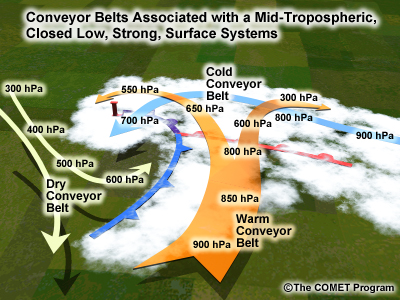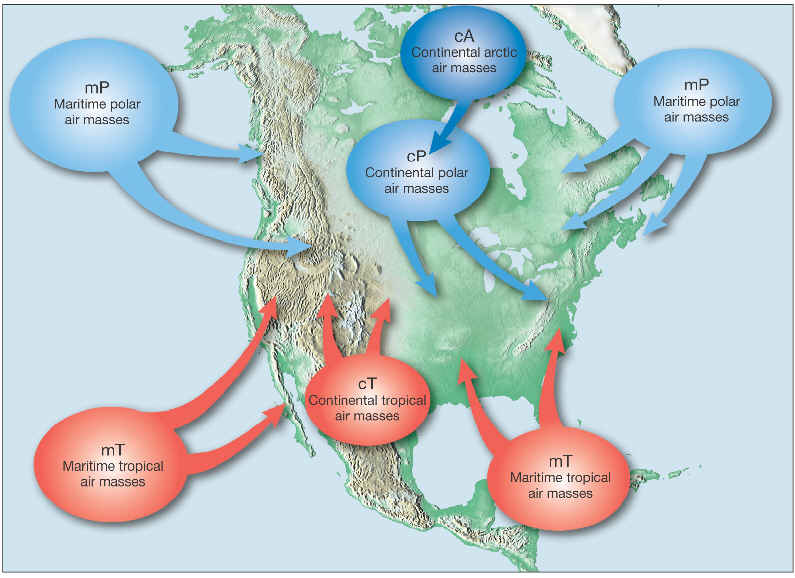 |
||||
Scientific Understanding
 
Left Image: Schematic of low pressure system with associated atmosperic conveyor belts - Comet program. Right image: Various air masses in North America - blendspace.com
Meteorology Meteorologists must have a thorough understanding of the science of meteorology and atmospheric motions in order to accurately predict the weather. As meteorologists continue to probe the atmosphere, performing more experiments and studies, we grow in our understanding of what creates various weather patterns and how to forecast these patterns. One area of meteorological study important to residents of the Great Lakes region is the interaction that takes place between the air, the land, and these huge bodies of water. Accurate forecasts of winds and waves on the lakes are critical to both the crews of the large freighters making their living on the lakes and to the recreational boater or fisherman enjoying time on the water. Role of Stability and Pressure Changes In order to provide accurate wind and wave forecasts, meteorologists must study the effects of different air masses on the lakes in the generation of waves and look at the different factors important to producing waves. For example, in 1980, NOAA researchers Liu and Ross studied different samplings of winds, wave heights, and water surface temperatures. They concluded that atmospheric stability plays a role in the growth of waves. They showed that the wind speeds and fetch distance needed to generate the same wave heights are less for an unstable atmosphere than for a stable one. This was an important advancement in meteorology since the 1975 Fitzgerald storm as the atmosphere over the Great Lakes is frequently unstable during the fall and early winter. Another area of important research is in rapidly deepening low pressure systems such as the one associated with the Fitzgerald storm. NOAA and NASA researchers extensively studied flow around low pressure systems during the late 1970s and early 1980s, identifying different flow patterns not clearly understood. As a result of this research, forecasters gained a better understanding of the effects of jet stream winds on the development of deepening low pressure systems. This advanced knowledge allows today's meteorologist to provide more accurate and detailed forecasts. |
||||
| Credits | Disclaimer | |
||||